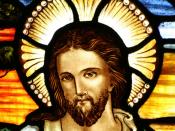Using the fragmentary information available about early Christian women, Osiek and MacDonald in their book, A WomanÃÂs Place: House Churches in Earliest Christianity, examine the everyday lives of women in the New Testament. This includes all the diverse roles, responsibilities and stages of life that women experienced: birth, childhood, marriage, child-bearing, motherhood, wet-nurses, child carers, slaves, wives, widows, and grandmothers. The title for their book is indicative of its content and approach. The house-church movement is the lens through which they explore the lives of women in the early church, and it is through the lives of these women that we come to learn a little more about the nature of early Christianity.
In the opening chapter, the authors position themselves briefly in relation to some assumptions and especially ÃÂthree polaritiesÃÂ that have seeped into the study of women in the early church: patriarchy versus the discipleship of equals (p1), public versus private social structures (p.3),
and the ascetic versus domestic lifestyles of women (p4). The authors also outline what they understand to be the basic services provided by the house churches, such as hospitality, education, communication, social and charitable activities, evangelisation, and mission (p. 12-15).
Chapter 2, ÃÂDutiful and Less than Dutiful WivesÃÂ conveys the complexity of marriage in the first century. Beyond PaulÃÂs letters and Acts, ÃÂwe have virtually no evidence of specific, married couples being presented positively as making contributions to house-church communitiesÃÂ (p.48). They offer that perhaps later couples co-led house churches like Priscilla and Aquila (Romans 16:3-5 NRSV) but were simply taken for granted. Nevertheless, marriage issues concerned the church. Even though the evidence about women from this time is very limited, Osiek and MacDonald present a well-supported argument for the significant role that married women played in the early church. In particular,
![MacDonald Tartans [8]](https://s.writework.com/uploads/12/129102/macdonald-tartans-8-thumb.jpg)

